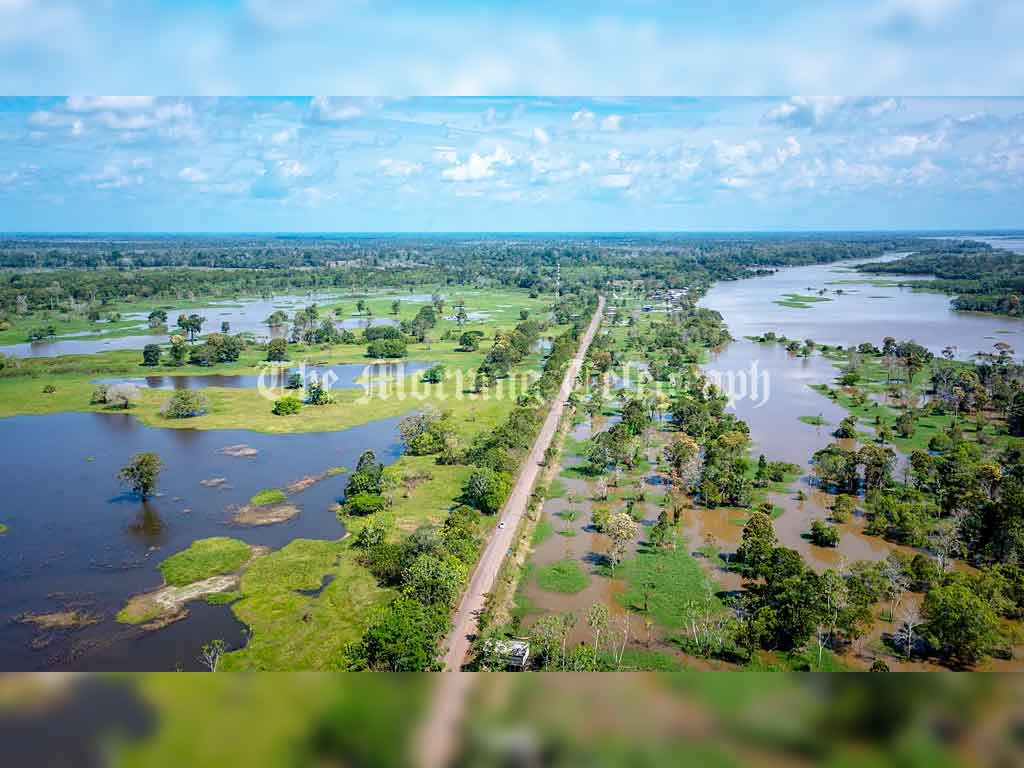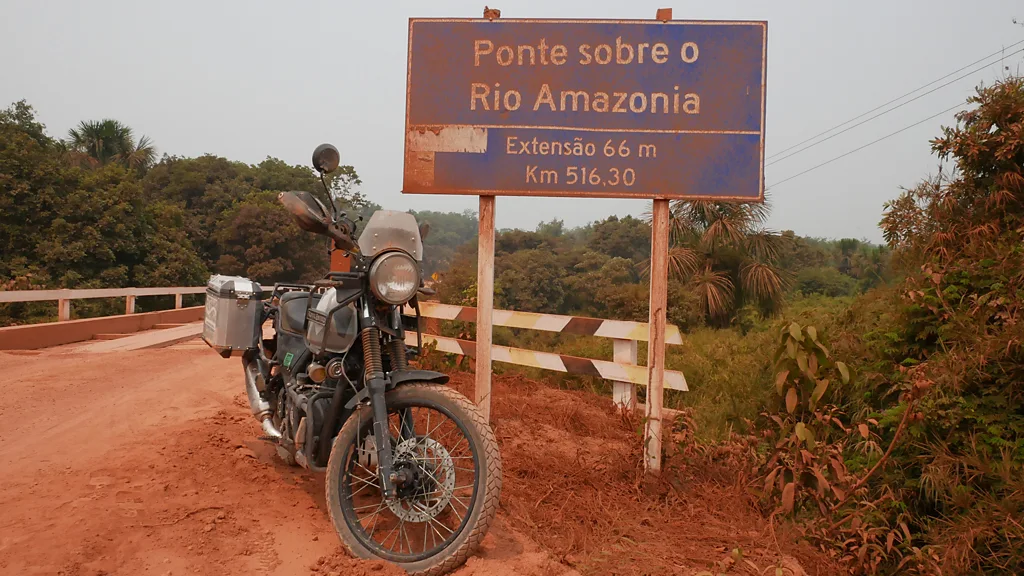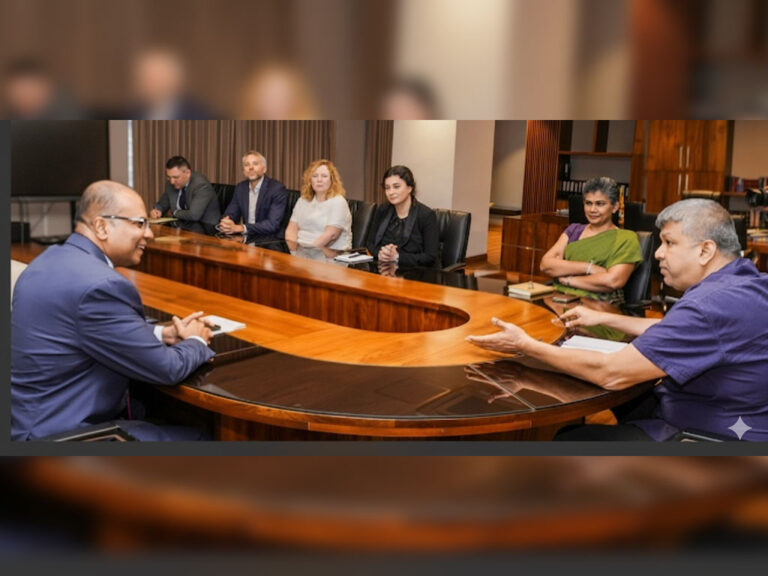
The BR-319, dubbed the “Road of Ghosts,” winds through 900 kilometers of dense Amazon rainforest, representing a critical yet divisive link between the Amazonian city of Manaus and the rest of Brazil. Known for its perilous condition, the highway has long been impassable during the rainy season due to deep potholes and flooded sections, leaving drivers to contend with bone-rattling dirt roads in the dry months. Yet, despite its challenges, it offers one of the last unfiltered experiences of the Amazon that few travelers ever get to witness—untouched wilderness, remote communities, and a haunting glimpse of the country’s environmental and political conflicts.
A Road Built for Exploitation
Constructed in the 1970s under a military government eager to exploit the Amazon’s vast natural resources, the BR-319 was designed as a vital overland connection between Manaus, a city of over two million people, and Porto Velho in the state of Rondônia. It was built with promises of connecting the economically isolated regions of the Amazon to the rest of Brazil, drawing migrants to the area with the hope of agricultural opportunity and the promise of cheap land. However, maintenance quickly became an afterthought, and the highway soon fell into disrepair, leaving isolated communities dependent on its crumbling path.
While the road played a vital role in the economic expansion of the region, the lack of infrastructure investment, especially in the years following its construction, led to the abandonment of many of the towns that had once flourished along its length. Now, much of the BR-319 is barely usable, especially during the rainy season, where deep ruts and impassable mud leave travelers stranded for days.

A Gateway to Progress or Destruction?
Recently, Brazilian President Luiz Inácio Lula da Silva has announced plans to rebuild the BR-319, promising an upgrade that could integrate the Amazon into Brazil’s broader economy. Proponents of the plan argue that improving the highway is essential for the economic development of Amazonas and Rondônia, particularly for the agriculture, mining, and logistics sectors. They claim that a well-maintained road would stimulate business, bring in tourists, and make the transportation of goods from the remote interior to the coast more efficient.
However, critics—including environmentalists, indigenous groups, and members of Lula’s own government—warn that the project could unleash irreversible environmental damage. By paving the way for greater accessibility to previously untouched sections of the rainforest, the road could facilitate illegal logging, land grabbing, and deforestation. A fully operational highway would likely attract settlers, farmers, and ranchers, all eager to stake a claim in the Amazon’s fertile lands, leading to an exponential increase in deforestation rates and a further erosion of protected lands.
Environmental groups have raised alarms over the “fish-bone effect,” where the BR-319 would act as the central spine of a network of illegal roads and development projects, cutting through protected areas and indigenous territories. Experts predict that this increased access could lead to a fivefold rise in deforestation, putting a strain not only on biodiversity but also on the region’s climate resilience. The Amazon rainforest plays a critical role in regulating global weather patterns, and deforestation at such a scale could exacerbate climate change worldwide.
A Motorcycle Adventure Through the Amazon
For those seeking adventure, the BR-319 offers one of the most challenging—and rewarding—overland journeys in the world. In the dry season, the road is frequented by adventure tourists, often traveling in rugged vehicles like Land Cruisers or on motorcycles, eager to experience the Amazon from a different perspective. The road is notorious for its extreme conditions, with stretches of deep mud and rutted, crater-like potholes that make even the most experienced drivers tremble. But for many, the hardship of the journey is part of the appeal: a raw and unfiltered connection to the wild, a journey that takes them far beyond the typical tourist routes.

Flávio Bressan, a Brazilian tour operator who leads motorcycle expeditions through the Amazon, shares his unique insights into the highway. He tells travelers that while the BR-319’s reputation as a dangerous, abandoned road might have once been true, it’s no longer the case. With the help of his company, Cerrado Moto Aventura, Bressan has mapped out safer routes and helped bring awareness to this part of the Amazon through tours. “It’s still a challenging road,” he admits, “but it’s not the ghost road it once was. It’s a place full of life—people, nature, and stories—if you know where to look.”
The Struggles of Isolated Communities
For the rural communities along the BR-319, the state of the road is an urgent issue. Many towns like Realidade, a small settlement midway through the highway, rely on the highway to bring in goods, tourists, and trade. Léia, a local cafe owner, recounts her experiences of living in Realidade, where the promise of a repaved BR-319 has remained unfulfilled for years. “When it’s dry, we get some traffic and business is good,” she says. “But when the rains come, the road becomes impassable, and the town feels abandoned.”
In addition to the economic strain, the region faces severe logistical challenges due to the lack of a stable, paved road. Realidade struggles with problems like sewage overflow and difficulty receiving essential supplies, a situation exacerbated by the lack of proper infrastructure. Local businesses, like Léia’s diner, suffer from the fluctuating traffic, leading to financial instability and the isolation of communities.

Environmental Fears and Indigenous Rights
Beyond the logistical challenges, the environmental and human rights concerns surrounding the BR-319 are growing. The region is home to hundreds of indigenous groups, many of whom have lived in the Amazon for centuries, preserving the forest and its ecosystems. One such group, the Tenharim-Marmelos, have witnessed the encroachment of outside land grabbers as roads like the BR-319 open up the region. Daiane Tenharim, a representative of her people, expresses deep concerns about the future: “We are not against the paving, but it must be done with consultation and respect for the people who have lived here for generations.”
The Tenharim and other indigenous groups face growing threats from illegal deforestation, wildlife poaching, and even violence as outsiders push into their territories. The promise of paved roads and improved accessibility to their ancestral lands could exacerbate these problems, putting more pressure on their already fragile communities. “The government must ensure that we have the proper protections in place, or we risk losing everything,” says Tenharim.
A Tense Future: Development or Destruction?
As the BR-319 stands at a crossroads, the debate over its future encapsulates the larger struggle for the Amazon. On one side, there are calls for progress, development, and integration of the Amazon into Brazil’s economy. On the other, there are warnings of irreversible damage to one of the world’s most vital ecosystems. For travelers and locals alike, the highway represents both the potential for growth and the danger of destruction—a duality that reflects the uncertainty of the Amazon’s future.
For now, the BR-319 remains a symbol of the fragility of the Amazon, a wild and challenging frontier that holds both promise and peril. As Brazil navigates the difficult choices ahead, the road will continue to be a literal and figurative path to understanding the delicate balance between environmental preservation and development in one of the world’s most ecologically significant regions. The question remains: will the BR-319 pave the way to prosperity or lead to the irreversible loss of one of the planet’s greatest treasures?




